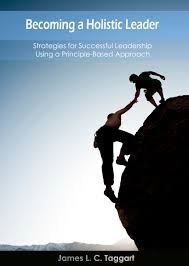Do You Know the Difference Between Corporate Culture and Climate?

In this post we’ll look at the distinction between organizational culture and climate. Trying to get a grasp on what makes an organization tick and understanding how people either collaborate or undermine one another is akin to trying to nail jello to the wall. It’s easier said than done.
When we talk about corporate culture we’re actually referring to the climate of the organization. Employee survey questionnaires, while making management feel that it’s doing something constructive, are intended to simply skim the surface of the organization, picking off issues oriented around working relationships and training opportunities.
There’s nothing wrong with collecting this type of information, provided that it’s understood the context in which it’s obtained and the limited uses to which it can be applied. However, when we speak of changing an organization’s culture to one of being, for example, client-centric or that of a learning organization, then we must dive beneath the surface to explore in much greater detail.
Below is a set of questions that may be of assistance to you in trying to develop a better understanding of what drives your organization and what influences employees to act the way they do at work. • What are the unspoken assumptions that determine how work gets done and decisions made, following “accepted” practices and processes?
• How do employees (managers and staff) see themselves in relation to the environments in which they work?
• What are the shared, tacit assumptions that determine who is “in” and who is “out” when it comes to having access to information and senior management?
• How do employees get labeled?
• What are the rituals?
• How do employees accomplish their work in the context of past and existing organizational structures and processes?
• What is the nature of authority and working relationships?
• What determines how employees are rewarded and punished?
• How is power exercised?
Assessing the culture of an organization is best done by bringing people together in small groups to delve into the unspoken assumptions and beliefs on why and how things are done the way they are. Unfortunately, employee questionnaire surveys only uncover the superficial, known issues, or what would be called the espoused values of the organization. Surveys do NOT reveal assumptions because they only uncover the superficial, known issues, or what would be called the espoused values of the organization. Surveys do NOT reveal assumptions because they don’t ask the right questions.
Yes, surveys provide anonymity for the respondent. However, the consequence is that the results get parked on management’s doorstep. The response of employees is, “Okay, we’ve completed the survey. Now do something!”
Wrong!
What’s critical to realize is that when survey data are compiled the worst thing you can do is park the results on management’s doorstep. This is a disempowering approach to shared leadership. Employees MUST be part of the solutions and work with, not against, management. And if organized labor exists in the workplace, then it must play an active part in finding solutions.
The key is to open a dialogue in which people feel safe to participate and to express themselves. This is why participative processes that include everyone, from bottom to the top, are so powerful. They give people a voice and stimulate people to empower themselves.
Bringing people together to openly discuss values and shared assumptions sends a powerful message to the organization. Those in senior managerial leadership positions then have their work cut out for them. But this time they’re not alone. They have a whole organization of employees backing them, keen to contribute their knowledge and experience.
In seeking truth you have to get both sides of the story.
—Walter Cronkite
__________________________________________________________________________________________________

Visit Jim’s e-Books, Resources and Services pages.
""
Articles from Jim Taggart
View blog
When we look back to the 20th Century and reflect on great leaders, whether leading nations, organiz ...

I am your servant. I do not come to you as a leader, as one above others. · When you read these word ...

Teamwork is talked about widely in organizations, but often with little understanding of what it mea ...
You may be interested in these jobs
-
Classroom Technical Co-Pilot
Found in: Talent CA C2 - 1 day ago
InsideHigherEd Sarnia, Canada OTHERClassroom Technical Co-Pilot · Date Posted: 03/08/2024 · Req ID: 36456 · Faculty/Division: VP & Provost · Department: Learning Space Management · Campus: St. George (Downtown Toronto) · Position Number: · Description: · About us: Learning Space Management (LSM) has a focus on le ...
-

Engineering Manager
Found in: beBee S2 CA - 3 weeks ago
Canonical - Jobs Mississauga, Canada Full timeThis is a general track for first-level engineering management positions at Canonical. · We believe that open source is just starting to transform the tech sector and enterprise compute. Our goal is to make open source easier, more reliable and more secure for deployment and deve ...
-

Business Process Analyst
Found in: Talent CA C2 - 3 days ago
BMO Financial Group Scarborough, Canada ContractCompany Overview · BMO is an organization driven by a shared Purpose: Boldly Grow the Good in business and life. It calls on members of its team, to create lasting, positive change for its customers, its communities, and its people. By working together, innovating, and pushing bo ...

Comments